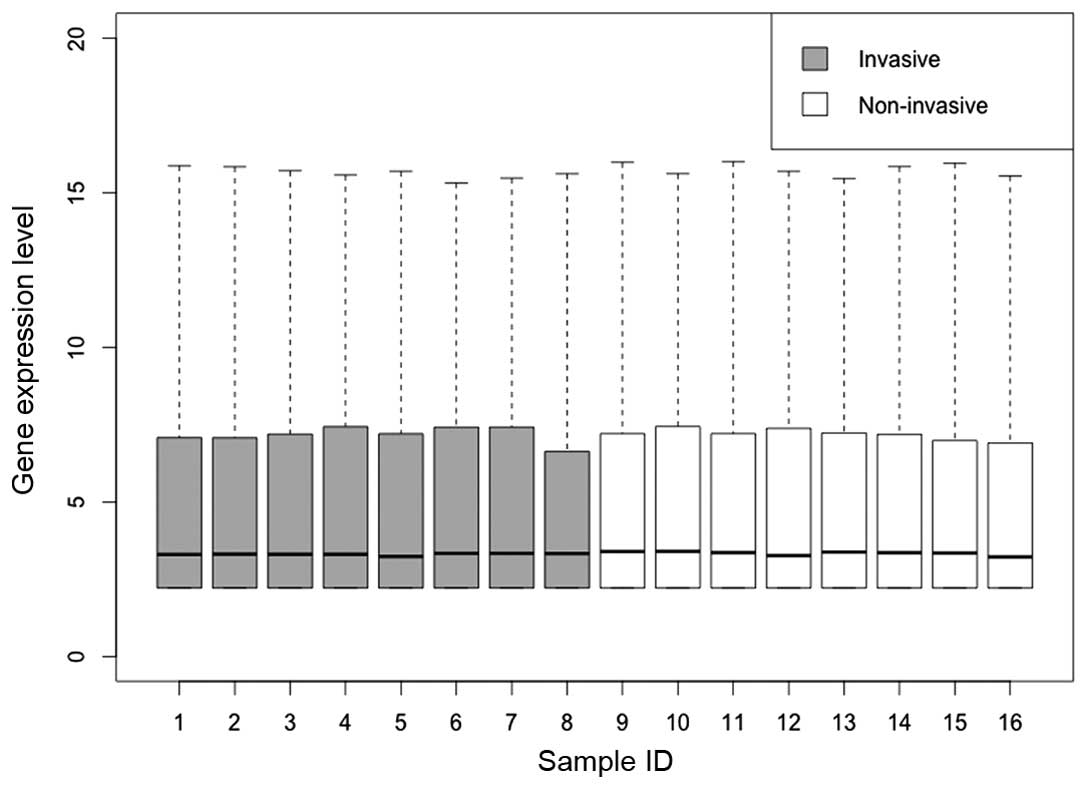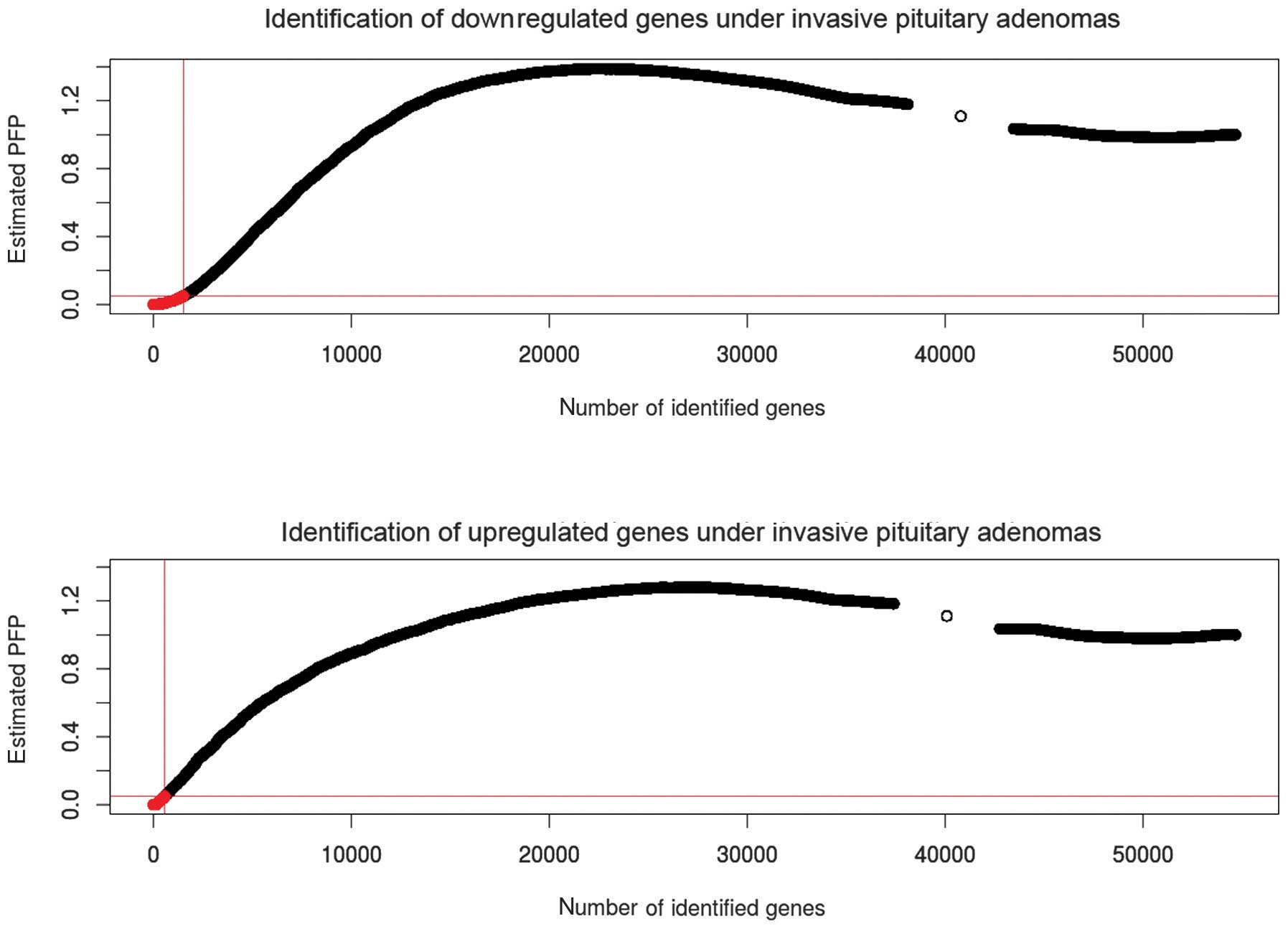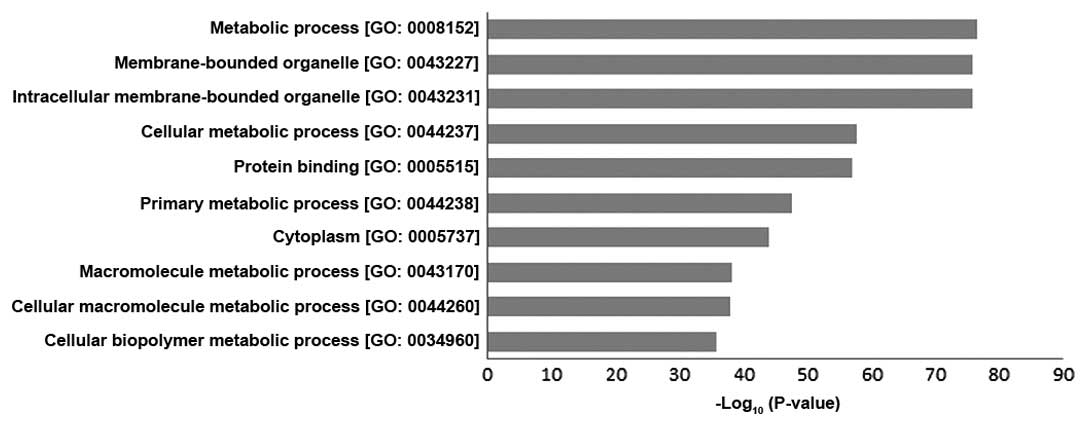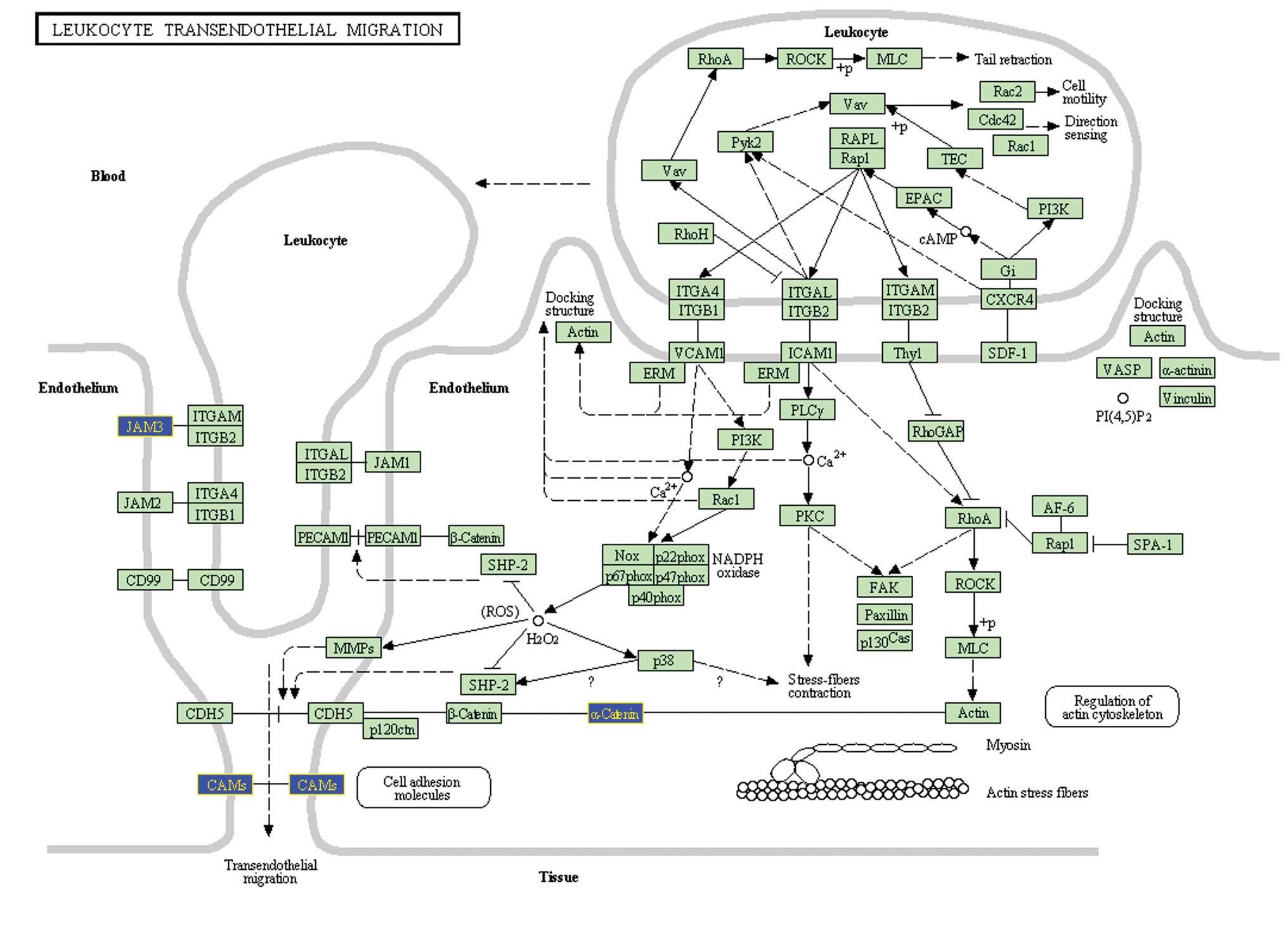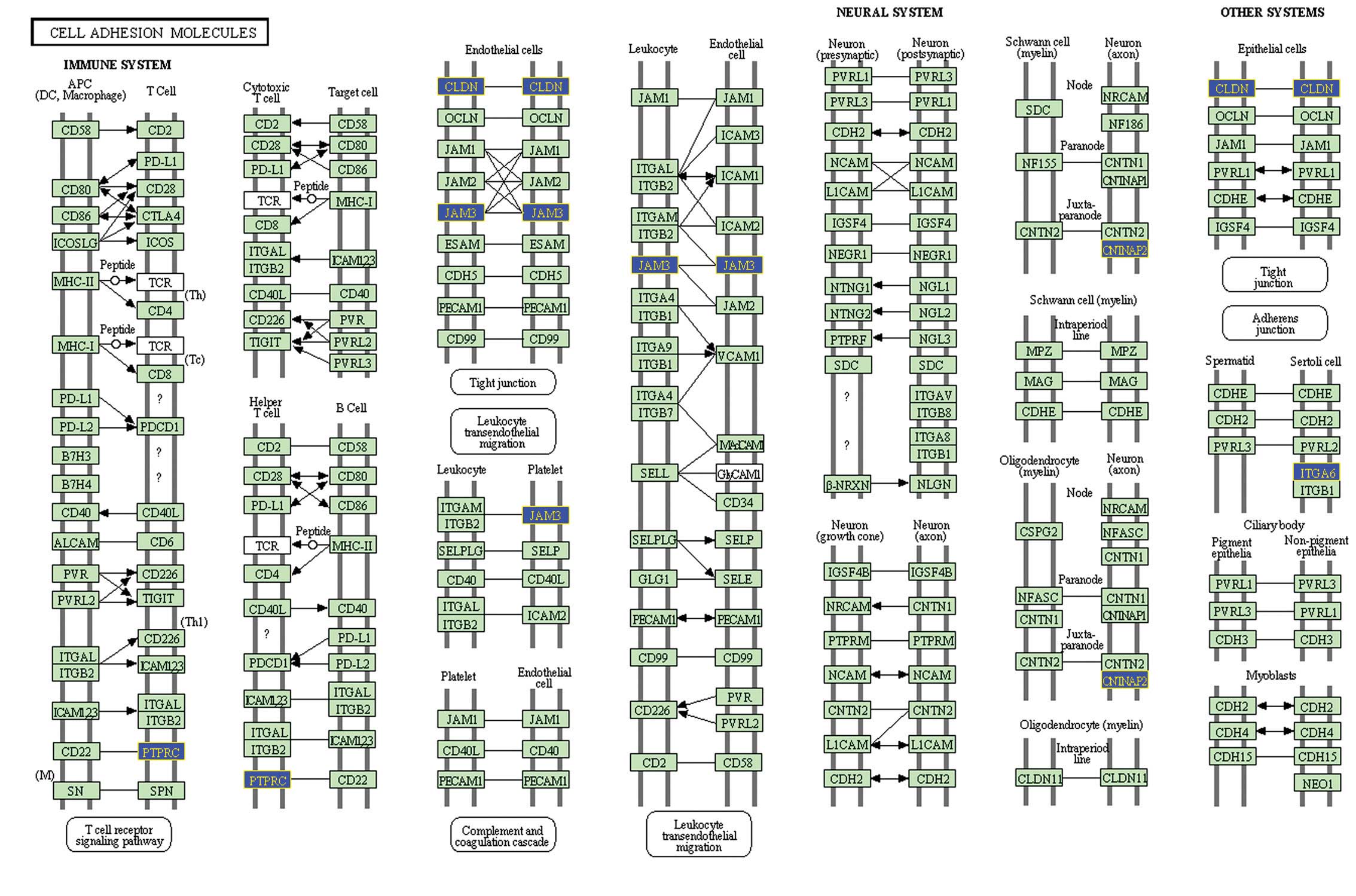|
1
|
Oruçkaptan HH, Senmevsim O, Ozcan OE and
Ozgen T: Pituitary adenomas: results of 684 surgically treated
patients and review of the literature. Surg Neurol. 53:211–219.
2000. View Article : Google Scholar : PubMed/NCBI
|
|
2
|
Scheithauer BW, Kurtkaya-Yapicier O,
Kovacs KT, Young WF Jr and Lloyd RV: Pituitary carcinoma: a
clinicopatho-logical review. Neurosurgery. 56:1066–1074. 2005.
|
|
3
|
Thapar K, Scheithauer BW, Kovacs K,
Pernicone PJ and Laws ER Jr: p53 expression in pituitary adenomas
and carcinomas: correlation with invasiveness and tumor growth
fractions. Neurosurgery. 38:765–770. 1996. View Article : Google Scholar : PubMed/NCBI
|
|
4
|
Ezzat S, Zheng L and Asa SL: Pituitary
tumor-derived fibroblast growth factor receptor 4 isoform disrupts
neural cell-adhesion molecule/N-cadherin signaling to diminish cell
adhesiveness: a mechanism underlying pituitary neoplasia. Mol
Endocrinol. 18:2543–2552. 2004. View Article : Google Scholar : PubMed/NCBI
|
|
5
|
Kawamoto H, Kawamoto K, Mizoue T, Uozumi
T, Arita K and Kurisu K: Matrix metalloproteinase-9 secretion by
human pituitary adenomas detected by cell immunoblot analysis. Acta
Neurochir (Wien). 138:1442–1448. 1996. View Article : Google Scholar
|
|
6
|
Gadelha MR, Trivellin G, Hernández Ramírez
LC and Korbonits M: Genetics of pituitary adenomas. Front Horm Res.
41:111–140. 2013.PubMed/NCBI
|
|
7
|
Barrett T, Wilhite SE, Ledoux P, et al:
NCBI GEO: archive for functional genomics data sets – update.
Nucleic Acids Res. 41:D991–D995. 2013. View Article : Google Scholar
|
|
8
|
Rustici G, Kolesnikov N, Brandizi M, et
al: ArrayExpress update-trends in database growth and links to data
analysis tools. Nucleic Acids Res. 41:D987–D990. 2013. View Article : Google Scholar
|
|
9
|
Gautier L, Cope L, Bolstad BM and Irizarry
RA: affy-analysis of Affymetrix GeneChip data at the probe level.
Bioinformatics. 20:307–315. 2004. View Article : Google Scholar : PubMed/NCBI
|
|
10
|
Hong F, Breitling R, McEntee CW, Wittner
BS, Nemhauser JL and Chory J: RankProd: a bioconductor package for
detecting differentially expressed genes in meta-analysis.
Bioinformatics. 22:2825–2827. 2006. View Article : Google Scholar : PubMed/NCBI
|
|
11
|
Tarca AL, Draghici S, Khatri P, et al: A
novel signaling pathway impact analysis. Bioinformatics. 25:75–82.
2009. View Article : Google Scholar :
|
|
12
|
Cohen MB, Griebling TL, Ahaghotu CA,
Rokhlin OW and Ross JS: Cellular adhesion molecules in urologic
malignancies. Am J Clin Pathol. 107:56–63. 1997.PubMed/NCBI
|
|
13
|
Okegawa T, Pong RC, Li Y and Hsieh JT: The
role of cell adhesion molecule in cancer progression and its
application in cancer therapy. Acta Biochim Pol. 51:445–457.
2004.PubMed/NCBI
|
|
14
|
Okegawa T, Li Y, Pong RC and Hsieh JT:
Cell adhesion proteins as tumor suppressors. J Urol. 167:1836–1843.
2002. View Article : Google Scholar : PubMed/NCBI
|
|
15
|
Birchmeier W and Behrens J: Cadherin
expression in carcinomas: role in the formation of cell junctions
and the prevention of invasiveness. Biochim Biophys Acta.
1198:11–26. 1994.PubMed/NCBI
|
|
16
|
Behrens J: The role of cell adhesion
molecules in cancer invasion and metastasis. Breast Cancer Res
Treat. 24:175–184. 1993. View Article : Google Scholar : PubMed/NCBI
|
|
17
|
Wijnhoven BP, Dinjens WN and Pignatelli M:
E-cadherin-catenin cell-cell adhesion complex and human cancer. Br
J Surg. 87:992–1005. 2000. View Article : Google Scholar : PubMed/NCBI
|
|
18
|
Usami Y, Chiba H, Nakayama F, et al:
Reduced expression of claudin-7 correlates with invasion and
metastasis in squamous cell carcinoma of the esophagus. Hum Pathol.
37:569–577. 2006. View Article : Google Scholar : PubMed/NCBI
|
|
19
|
Lioni M, Brafford P, Andl C, et al:
Dysregulation of claudin-7 leads to loss of E-cadherin expression
and the increased invasion of esophageal squamous cell carcinoma
cells. Am J Pathol. 170:709–721. 2007. View Article : Google Scholar : PubMed/NCBI
|
|
20
|
Oshima T, Kunisaki C, Yoshihara K, et al:
Reduced expression of the claudin-7 gene correlates with venous
invasion and liver metastasis in colorectal cancer. Oncol Rep.
19:953–959. 2008.PubMed/NCBI
|
|
21
|
Lu Z, Ding L, Hong H, Hoggard J, Lu Q and
Chen YH: Claudin-7 inhibits human lung cancer cell migration and
invasion through ERK/MAPK signaling pathway. Exp Cell Res.
317:1935–1946. 2011. View Article : Google Scholar : PubMed/NCBI
|
|
22
|
Yoshizawa K, Nozaki S, Kato A, et al: Loss
of claudin-7 is a negative prognostic factor for invasion and
metastasis in oral squamous cell carcinoma. Oncol Rep. 29:445–450.
2013.
|
|
23
|
Kinoshita T, Nohata N, Hanazawa T, et al:
Tumour-suppressive microRNA-29 s inhibit cancer cell migration and
invasion by targeting laminin-integrin signalling in head and neck
squamous cell carcinoma. Br J Cancer. 109:2636–2645. 2013.
View Article : Google Scholar : PubMed/NCBI
|
|
24
|
Kwon J, Lee TS, Lee HW, et al: Integrin
alpha 6: a novel therapeutic target in esophageal squamous cell
carcinoma. Int J Oncol. 43:1523–1530. 2013.PubMed/NCBI
|
|
25
|
Tenan M, Aurrand-Lions M, Widmer V, et al:
Cooperative expression of junctional adhesion molecule-C and -B
supports growth and invasion of glioma. Glia. 58:524–537. 2010.
|
|
26
|
Fuse C, Ishida Y, Hikita T, Asai T and Oku
N: Junctional adhesion molecule-C promotes metastatic potential of
HT1080 human fibrosarcoma. J Biol Chem. 282:8276–8283. 2007.
View Article : Google Scholar : PubMed/NCBI
|



